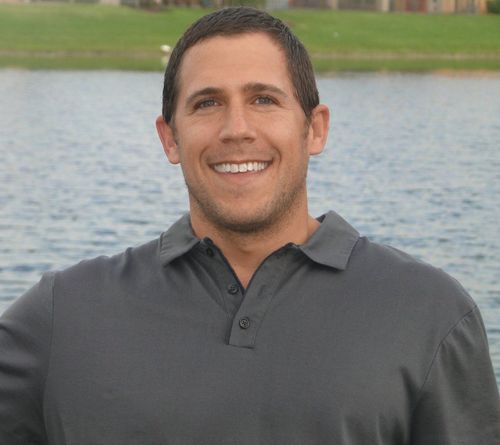Muhammad Ali famously said, “I am the greatest” before his world title fight against Sonny Liston in 1964. He didn’t care that he wasn’t the current heavyweight champion. Nor did he care that he’d never even fought for a championship belt. In his mind, beating Liston, winning the belt and becoming the best of all time were forgone conclusions – he simply needed to execute his plan.
That plan included dominating boxing at every level. From the time he put on a pair of boxing gloves at age 12 in Louisville, Kentucky, Ali (then Cassius Clay) was on a mission. At age 17 he became a two time amateur champion. When he was only 18-years-old he won an Olympic Gold Medal at the Summer Games in Rome, Italy. He turned pro that year and then began the process of punching his way to the heavyweight championship. After four years, he’d won 19 straight fights and finally earned the right to step into the ring for the heavyweight belt.
What does any of this have to do with freelance writing or freelance design or any creative freelance field?
Everything!
Even Muhammad Ali, the greatest, had to slug it out for four long years after he turned pro to get his title shot.
And what, you think you can get yours in your field in a matter of weeks or months? Unfortunately, far too many freelancers think that they’re going to be the exception to the “earn your title shot” rule and they fire off a bunch of e-mails or DMs to random contacts at a place they’d love to work and then when they’re ghosted or hear nothing, they quit. Or get down. Or blame the editors/managers for being jerks. Or all three.
Regardless of whether you’re a graphic designer, a journalist, an architect or whatever else, you likely have a pie-in-the-sky person/platform/company that you’d like to work for. Maybe you dream of having your byline in the New York Times or maybe your goal is to design Marvel movie posters and you have an idea for Dr. Strange in the Multiverse of Madness. Whether you’re just starting your career or you’re a veteran who hasn’t quite made the leap to the highest level of your field, I assure you that it is well within your power to work for whatever client you’ve placed on your personal mountaintop.
Right about now is when the negativity creeps in. If you’re just starting out, the mountaintop seems like it’s a lifetime away and you can’t conceive of how to get there. If you’ve been banging away for a long time, you’re battle scarred and you wonder if your peak is just a little lower than the peak you were aiming for (here’s a hint: it’s not). No matter where you are on your journey, you can follow in the footsteps of Ali and get to where you want to go.
It is well within your power to work for whatever client you’ve placed on your personal mountaintop.
You simply need to build an unassailable case that answers the following question your dream employer will most assuredly ask:
Why you?
In Ali’s case, he combined a perfect resume with the right amount of skill and excitement until he couldn’t be denied his chance.
You need to do the exact same thing, which means you need to ask yourself this question:
If I want to work for Superstar Company X (AKA, your title shot), what would I have to accomplish to make it an absolute no-brainer that they’d hire me?
While there are plenty of ways to go about this, here are four tried and true steps you can take to make this happen.
Step 1: Get repetitions
Ali fought in 105 amateur fights before he even turned professional (he was 100-5). That amateur period allowed him to learn, grow, fail, experiment, practice and prepare himself for his career. If you’re a writer, write every day. If you’re a designer, create new designs every day. Here’s the caveat: make sure everything you create has an endgame in mind and make them public so you get used to feedback (both positive and negative).
One thing that works is if you create a challenge for yourself: 30 blog posts in 30 days or 30 designs in 30 days. And since you’re doing this on your own, have fun with it. Create a blog series about your favorite movies or team or author. Design fan art or alternative album covers for your favorite musicians and share them with their fan accounts. These kinds of things not only get you the reps you need to hone your craft, but they also force you to put something out into the world for others too see. They don't all have to be masterpieces, but daily repetitions help you improve over time so when you look back at the first things you created you can see the improvement. Plus, you never know who’s looking. Take three-time New York Times Bestselling illustrator Arturo Torres for example, he was discovered by author Shea Serrano because of a rap concert poster he drew. He had no idea where that would take him and he wasn't shopping it around. It just happened to be noticed by someone who needed exactly what Torres did.
Step 2: Start with small wins in your niche
Using our movie poster designer example from earlier, let’s say that your goal really is to become a graphic designer for Marvel or Disney or a major studio. The first thing you should do is build a portfolio of designs for as many movies and plays as you can. Join independent film groups and call every local theater in a 50-mile radius. Offer to make posters for their projects (or alternative posters) for a nominal fee (whatever hourly rate/flat rate you feel is worth it). Yes, you’ll get rejected a lot, but not 100% percent of the time. In fact, all it takes is one ‘yes’ that leads to ongoing work to cancel out dozens of “no’s”. Repeat this process over and over as you build your portfolio. As your portfolio grows, so will your credibility. Once you’ve reached the point where you’re the “go-to” person for small time stuff, expand into mid-level territory, get steady work and keep moving forward.
Step 3: Go Big and Go Creative
If you’ve steadfastly followed steps one and two for a year (or two), you should have built up hundreds of reps and a nice-sized portfolio of legitimate work in your niche. This is when you can get a little gutsy. Sticking with our movie poster designer job, find something timely and topical and capitalize on it with samples. Maybe you go back and redesign every Marvel movie poster as if it came out in the 1970s. Use the fonts and design elements of another genre or time period. Do something to separate yourself from the pack to show off your unique creativity. Create something that people in your niche will find fresh and exciting and would share on their social media accounts.
Step 4: Gather Testimonials
If you’ve reached step four, you should be in perfect position to finally get in touch with your dream employer. But before you do, ask some of your biggest fans (who have paid you several times over) for a testimonial bragging about how great your work is. You can use those quotes in your introduction to Sara Smith (a made-up person), Head of Promotion Design at Marvel.
To recap, you’ve now gone from a lame intro e-mail that would have started like this:
“Hi, my name is Jon and I’d like to design posters for Marvel. I have a degree in Graphic Design from Finx State University (my imaginary school) and I’m a huge fan. I’d love to send you my portfolio for review. Thanks!”
To something like this:
“Hi, my name is Jon and I have designed over 125 movie/play posters for everything from local art houses here in Miami to major independent films that have won awards like the Florida Film Festival. Lily Jones, who is the head of Dolphin Productions, said that my designs are filled with “the skill of a pro infused with a childlike wonder for the subject matter”. Jen Armstrong says my, “energy and creativity are worth their weight in gold.” As a challenge, I recently created a new movie poster for every episode of WandaVision, but I designed them as if they came out in the 1970s. They’ve received tens of thousands of likes on Twitter and Instagram and I’d love to show them to you...”
Which letter would you rather be writing?
The first e-mail leaves the reader with the question: “Who are you?” while the second one screams: “I need to hire you!”
And once they hire you, just like Ali, you’ll feel like the heavyweight champion of the world.
Jon Finkel is an award-winning author and freelance writer and the creator of "Freelance Fortune: Write Words Like a Pro, Get Paid Like A Boss," a full video and e-book course that has generated well over six-figures in freelance assignments. It is a 100% proven, insider course on how to pitch, write and sell articles to any publication. Readers of this article can order it here for 40% OFF using the code word: writeclub.
Want help keeping track of all the things you need to build this epic portfolio? Indy has tools for everything from invoicing to proposals and more.



